A Complete Guide to Viewing Cherry Blossoms in Portland

For a brief spell around the spring equinox, a cotton-candy canopy forms along the Willamette.
There is no surer sign of springtime in Portland than the arrival of the cherry blossoms. Those pink-and-white fluffs, that cotton-candy canopy—the way the rain of petals feels, as Bryan Vance put it on a recent episode of City Cast Portland, like something out of a Disney movie. It’s incredible. And fleeting.
There are many ways to enjoy Portland’s cherry blossoms. The trees are abundant in our city, dotting parks and lining streets, swallowing you in a surprise cloud of pink as you round a corner on a neighborhood walk. But the quintessential Portland cherry blossom experience is at the Japanese American Historical Plaza, at the north end of Tom McCall Waterfront Park, where side-by-side rows form a glorious tunnel of blooms. The sight—and it really is a swoon-inducing one—attracts thousands of people every year.
Navigating the spectacle for the first time? We got you. Been a million times but want to join us in the countdown? Let’s go.
What’s the story behind these trees?
The 100 trees were a gift from a group of Japanese businessmen, members of the Japanese Grain Traders Import Association, who maintained branch offices in Portland. The plaza, dedicated in 1990, was designed by architect Robert Murase with the encouragement of legendary developer and civic leader Bill Naito. It borders the area known as Nihonmachi, or Japantown, where many Japanese Portlanders lived and worked before World War II. Poems inscribed on stones recount the history of Japanese immigration to Oregon, and the plaza serves as a memorial to those incarcerated in wartime camps.
The trees are an ornamental cherry called Akebono, which is one of the most common in the Pacific Northwest. But common things can be extraordinary, and that’s the case here, with blossoms forming veritable masses of pink.

The 100 trees lining the Japanese American Historical Plaza were a gift from the Japanese Grain Importers Association.
When do they bloom?
It depends on the weather—these are plants, after all—but peak bloom generally occurs between March 19 and 21, in time with the spring equinox. That’s according to the Japanese American Museum of Oregon, which posts regular updates about the waterfront cherry blossoms as they begin to emerge.
In 2024, peak bloom hit around March 16, which was early. As of March 5, KOIN 6 meteorologist Josh Cozart—who has been making daily visits to check on the status of the buds—predicts 2025’s peak bloom around March 21.
How long does it last?
As is so often the case with good things, not long enough. It depends, again, on weather conditions, but expect peak bloom to last anywhere from a few days to two weeks. The glossy, dark green leaves that follow are lovely in their own right, just with a little less of the romance.
What can I do there?
“Do” is perhaps not the operative word here. Visiting the cherry blossoms is largely about appreciating their ephemeral beauty; the term in Japanese is hanami. They can make for quite a romantic (if perhaps too well-peopled) stroll, and the photos turn out gorgeous.
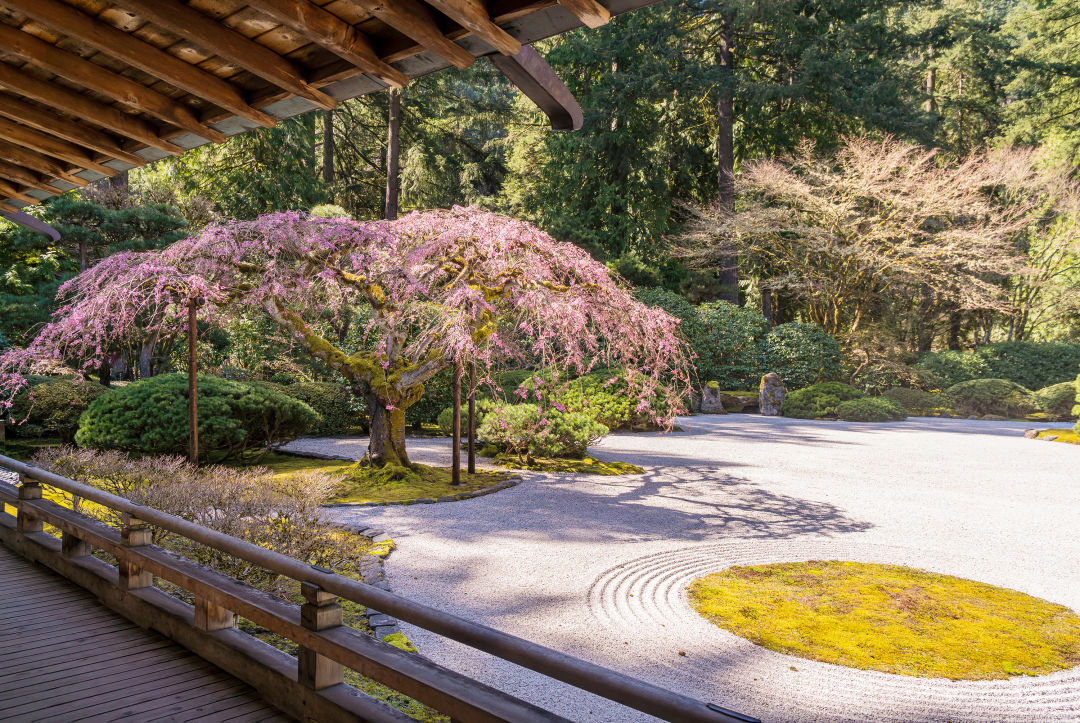
The weeping cherry at the Portland Japanese Garden blooms later than those on the waterfront.
Where else can I see cherry blossoms?
Beyond the trees that line the waterfront and dot city streets (and campuses like Reed College and University of Portland), the Portland Japanese Garden is home to Yoshino cherry trees, which have pale, white-pink blossoms. The garden also has a single weeping cherry, about 80 years old and 15 feet tall, that’s like a neon pink umbrella. These trees typically bloom later than those on the waterfront, thanks to the garden’s elevation and cooler, forested environment. The garden, blessedly, keeps a tracker, allowing cherry blossom enthusiasts to monitor progress like kids following Santa with NORAD. In 2025, weekly updates began Monday, March 10, and will become more frequent as peak bloom nears.
About 60 cherry trees live at the nearby Hoyt Arboretum, and these also bloom later than those on the waterfront. Among them is the late-flowering Shirofugen cultivar. The name references an elephant-riding Buddhist saint—look closely, and you might imagine the pistils as a pachyderm’s trunk. It’s a double flower, which means it has more petals than other cherry blossoms. Read: extra fluff.
In Salem, find a double row of 150 (or so) Akebono trees at the Capitol Mall. Cherry Blossom Day, an official state holiday since 2017, is the third Saturday of March, and this year includes martial arts demos, music, and a kimono fashion show. Or pack a picnic and make an evening visit—from March 15 to 31, the Oregon Parks and Recreation Department illuminates the trees nightly with Japanese lanterns and lights.
What about snacks? Got any snacks?
Yep. Mio Asaka, whose Mio’s Delectables can be found year-round at the Saturday Portland Farmers Market at PSU, incorporates the blooms into her baked goods, including a recent sakura pound cake with salted cherry blossoms and sakura lemon icing.
Share this content:
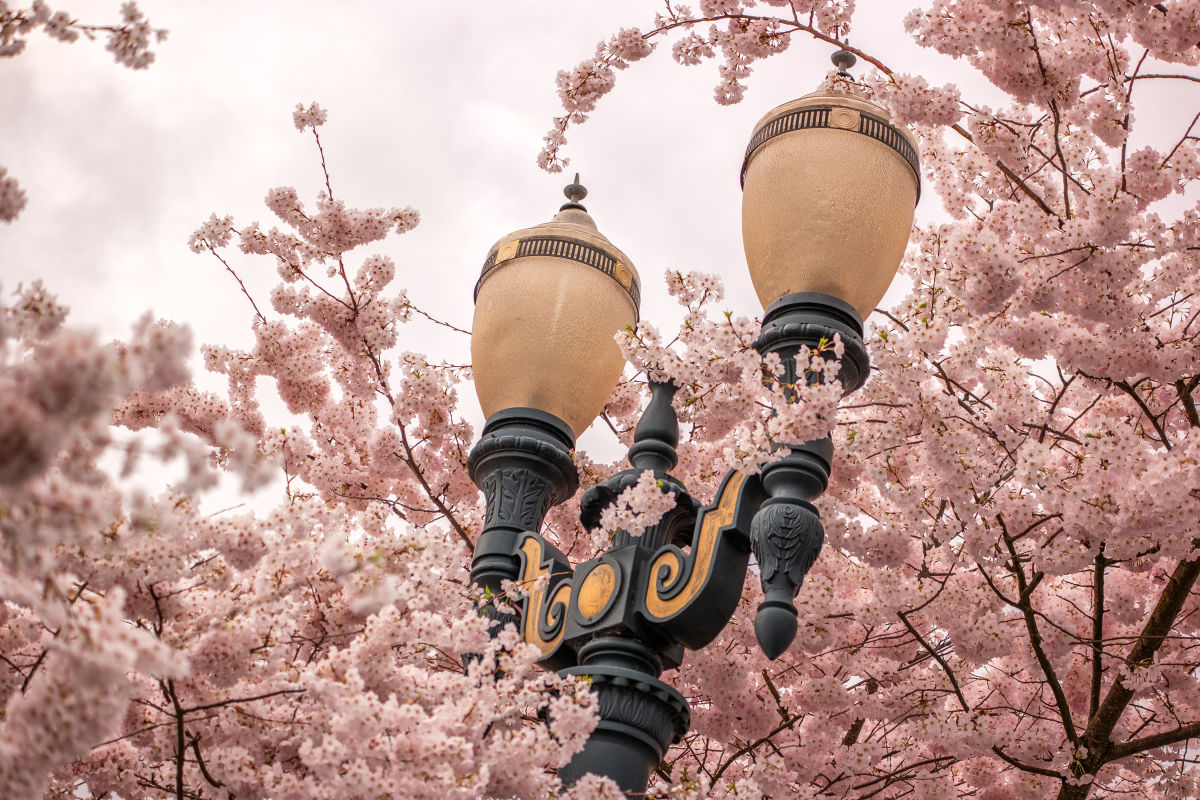

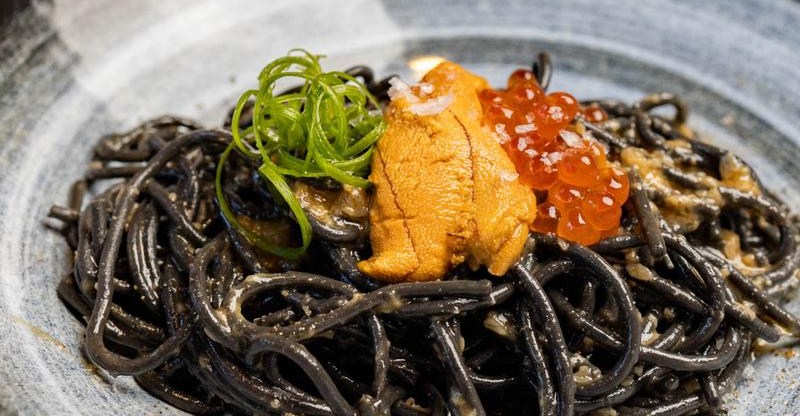

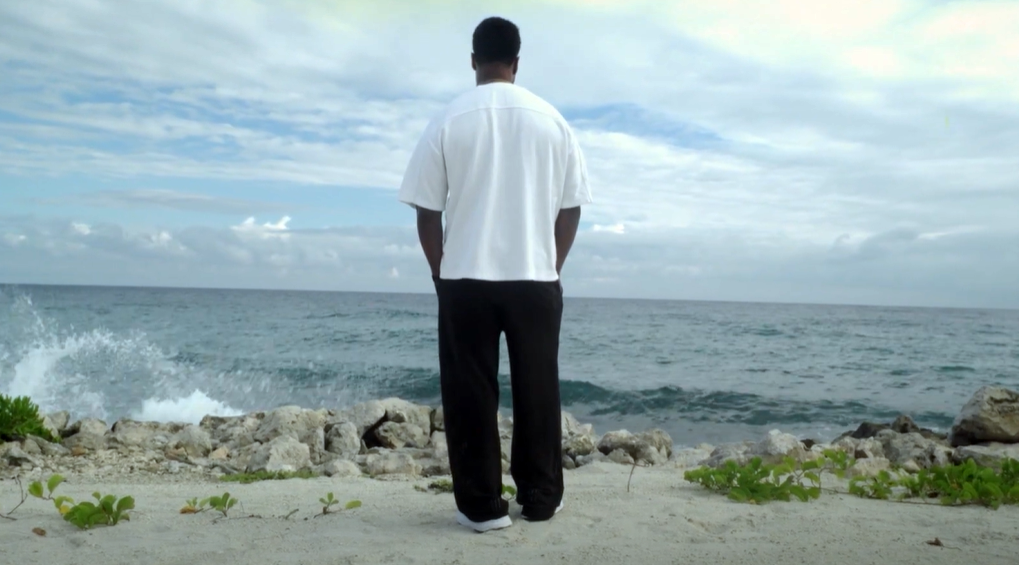
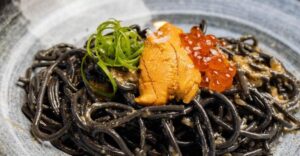



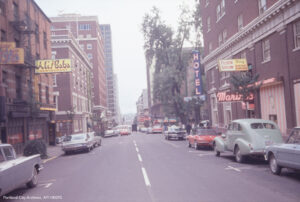
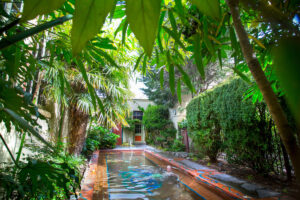


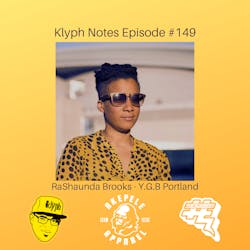

Post Comment